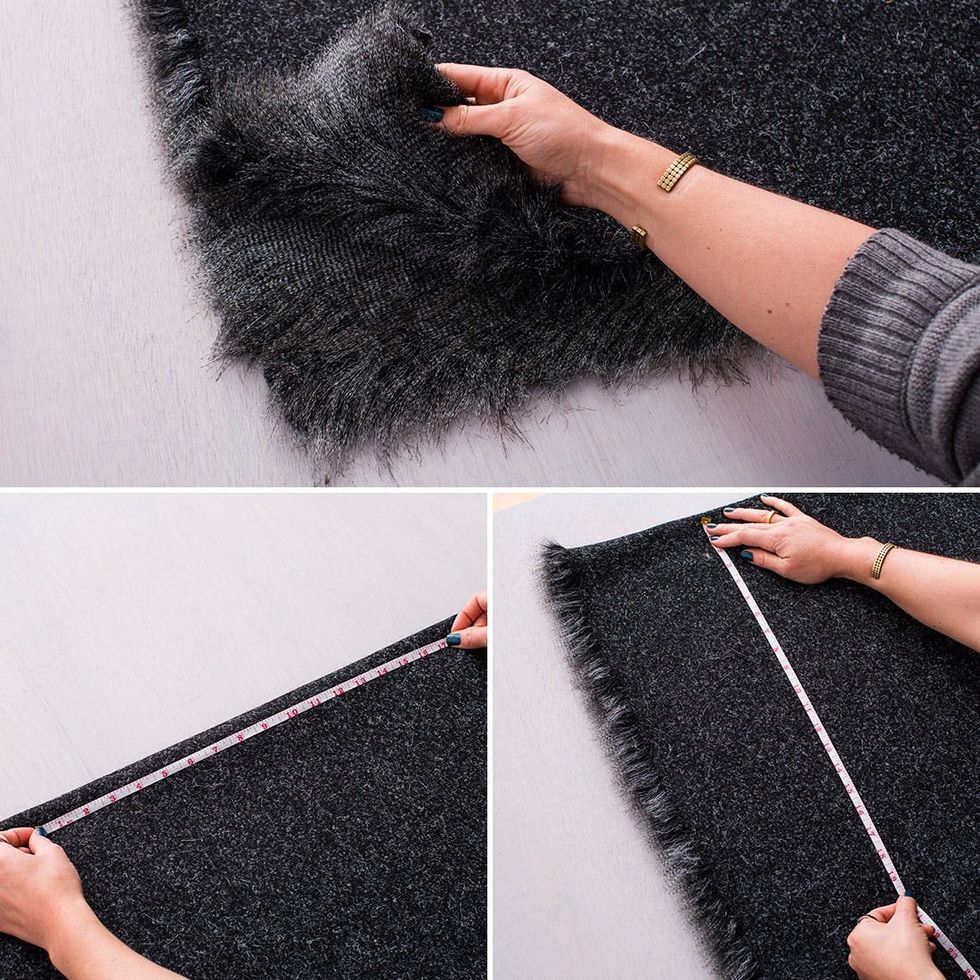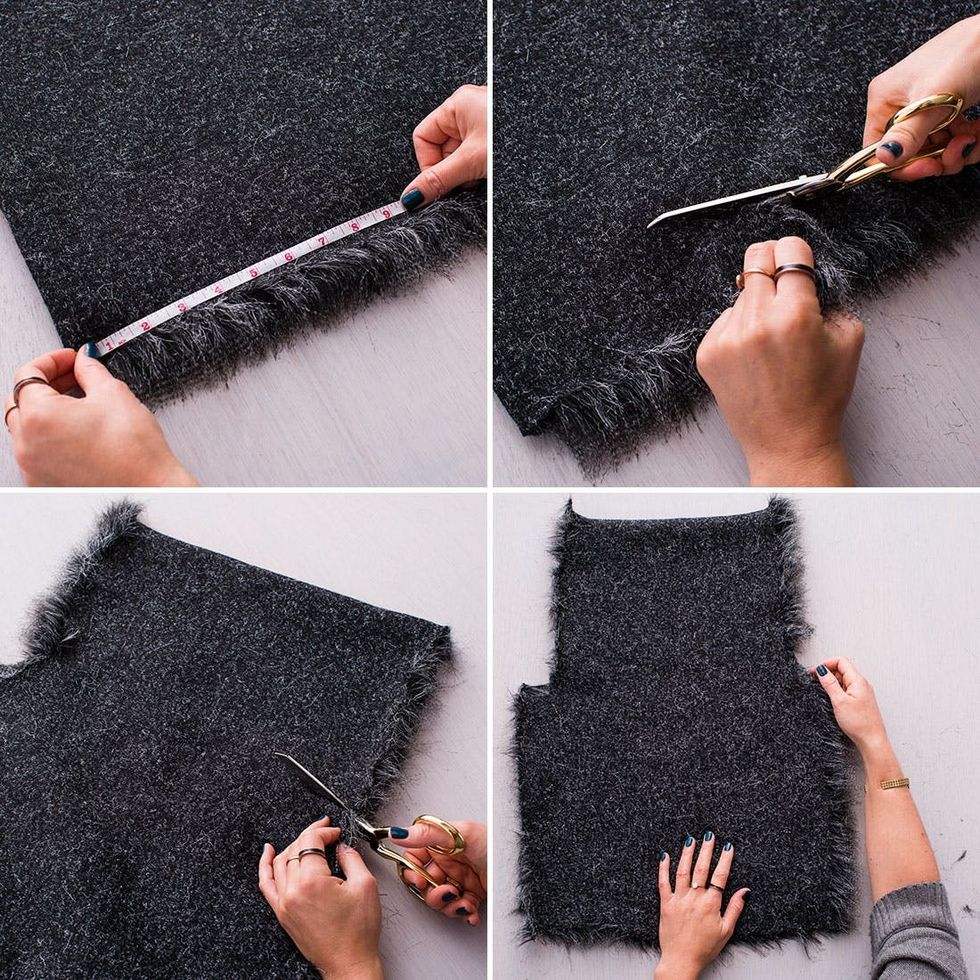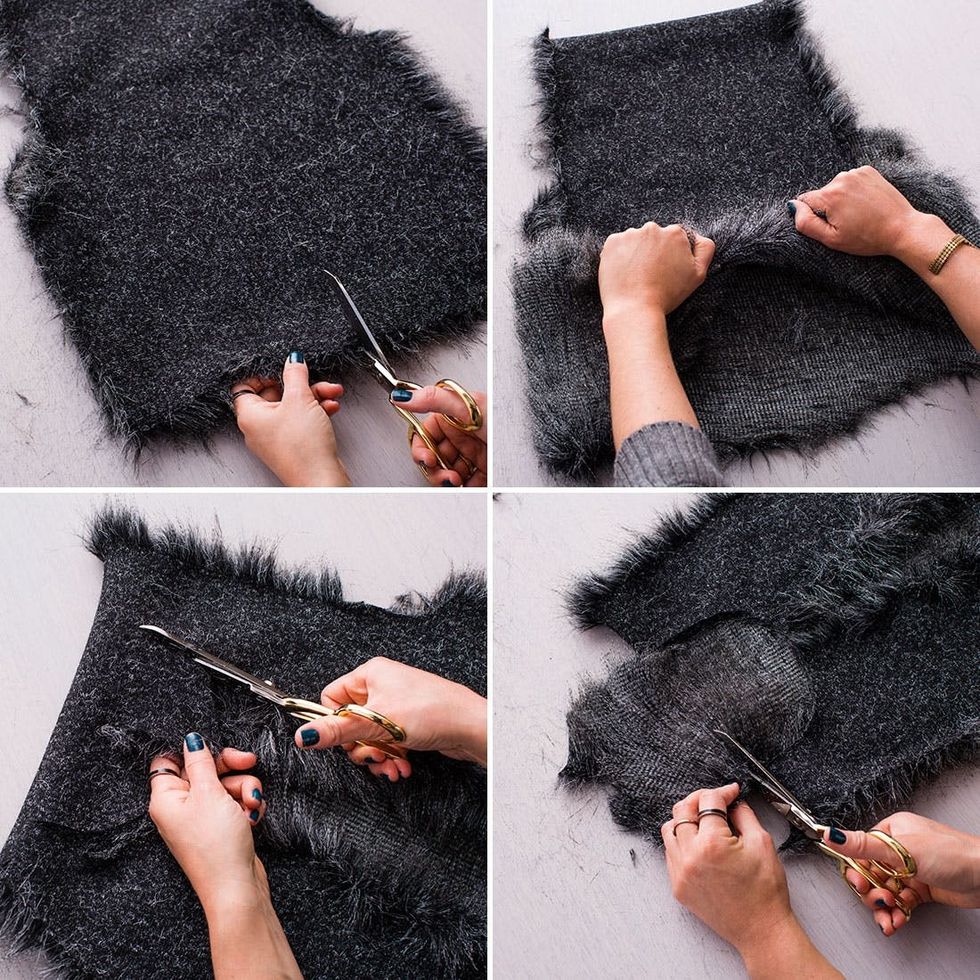How to Make a Chic Faux Fur Vest + 4 Ways to Style It

It’s time to wrap yourself up in a faux fur vest. That you made. This easy-to-DIY garment will give your outfits a fresh and sassy look while helping you keep up with the latest fashion trends. As Hansel would say, “those fur vests are so hot right now.” And they are. Follow our tutorial below to make your very own vest and then check out all the ways you can style it. We went girl boss, date night, casual and a night on the town.

Materials:

– fake fur
Tools:
– sewing machine
– fabric shears
– measuring tape
Instructions:

To start, head to your local fabric store and find some faux fur. We got some that has a real feathery feel to it, yet it’s got the weight necessary to keep you warm. Fold your fabric in half with the fur on the inside. Then measure the width of your shoulders (or if you’re making this for someone else, make sure to get their measurements). We found that cutting into the fur created sharp edges, much like a buzz cut. And as much as we loved the 80s, we don’t want our vest to look that clean cut. Instead, snip into the fabric and then use your muscles to rip it into a rectangle.
- Fold your fur fabric in half with the fur on the inside.
- Measure the width of your shoulders and then use that measurement to measure and mark your fur.
- Determine the length of your vest and mark your fabric.
- Snip the fabric at your marks and then rip the fabric, creating a rectangle with the folded fabric at the top.
- For the arm hole, measure approximately nine inches, and then cut into the fabric and rip up towards the folded top.
- Snip and rip along the center line, creating an opening in your vest.
- Cut a “U” shape at the collar.
- Sew along the sides and then pull out the fur that’s caught in the stitches.
- Flip your vest inside out.

Next you’ll need to cut some arm holes. Cut half of a “U” shape on either side of the vest, up near the folded edge. Remember to rip the fabric rather than cutting it.

Cut and rip the center line. It’s really starting to look like a vest now! Cut a “U” or “V” shape for the neck.

Now you need to sew the sides. Though it’s a little hard to see, you should be able to work your way through the fur to sew the sides together. Just don’t sew the arm holes shut! After you sew, you’ll need to pull some of the fur out of the thread. It gets caught in there, but with a little tug, you can mask any inconsistencies as well as the seam.

Turn your vest inside out and then get ready for a fashion show.

As we mentioned, we’ve styled four looks with our new piece.

First we’ve got casual. Throw your vest over a white tee and wear it with your boyfriend jeans.

Next up: date night. Wear a form-fitting turtleneck with a high-waisted skirt and then top it off with your fur vest. You’ll be looking nice and sassy for your date.

Oh what? You don’t think you can pull off the girl boss look with this vest? Think again. Style it underneath a blazer and over a classy dress. You’ll add a little punch to your I-mean-business look.

Finally, we’ve got a night out on the town… because right?! This is the perfect accessory to take your jumpsuit from cool to verrrry cool.











